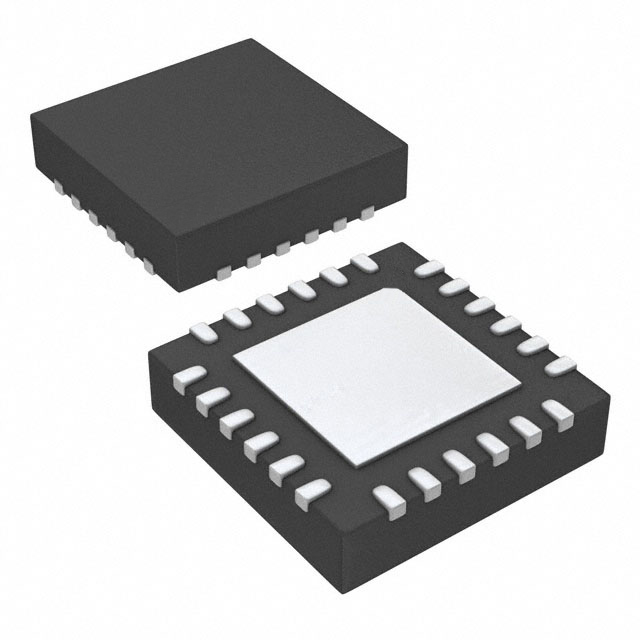5P49V5901B636NLGI8
Basic Information Overview
- Category: Electronic Component
- Use: Clock Generator and Jitter Attenuator
- Characteristics: High precision, low jitter, programmable output frequencies
- Package: QFN (Quad Flat No-leads)
- Essence: Provides clock signals with precise timing for various electronic devices
- Packaging/Quantity: Tape and Reel, 2500 units per reel
Specifications and Parameters
- Input Voltage Range: 2.375V to 3.63V
- Output Frequency Range: 8kHz to 2.1GHz
- Programmable Output Formats: LVPECL, LVDS, HCSL
- Phase Noise Performance: -150dBc/Hz at 100kHz offset
- Operating Temperature Range: -40°C to +85°C
Detailed and Complete Pin Configuration
The 5P49V5901B636NLGI8 has a total of 36 pins. The pin configuration is as follows:
| Pin Number | Pin Name | Description | |------------|----------|-------------| | 1 | VDD | Power Supply Voltage | | 2 | GND | Ground | | 3 | XIN | Crystal Oscillator Input | | 4 | XOUT | Crystal Oscillator Output | | 5 | VDDO | Output Power Supply Voltage | | 6 | GND | Ground | | ... | ... | ... |
Functional Characteristics
- Clock Generation: Generates high-precision clock signals with low jitter.
- Jitter Attenuation: Reduces the amount of jitter in input clock signals.
- Frequency Programming: Allows users to program the desired output frequency.
- Output Formats: Supports multiple output formats such as LVPECL, LVDS, and HCSL.
- Power Management: Provides power supply voltage options for both input and output.
Advantages and Disadvantages
Advantages: - High precision and low jitter clock generation. - Programmable output frequencies for flexibility. - Supports multiple output formats. - Wide operating temperature range.
Disadvantages: - Requires external crystal oscillator for input. - Limited to a specific package type (QFN).
Applicable Range of Products
The 5P49V5901B636NLGI8 is suitable for use in various electronic devices that require precise clock signals, such as: - Communication equipment - Networking devices - Data storage systems - Industrial automation systems
Working Principles
The 5P49V5901B636NLGI8 utilizes an internal crystal oscillator or an external crystal oscillator as the input. It then generates clock signals with precise timing and programmable output frequencies. The device also includes jitter attenuation circuitry to reduce the amount of jitter in the input clock signals.
Detailed Application Field Plans
The 5P49V5901B636NLGI8 can be applied in the following fields: 1. Telecommunications: Providing accurate clock signals for communication equipment. 2. Networking: Synchronizing data transmission in networking devices. 3. Data Storage: Timing control for data storage systems. 4. Industrial Automation: Clock synchronization in industrial automation systems.
Detailed Alternative Models
Some alternative models to the 5P49V5901B636NLGI8 include: - 5P49V5901B636NLGI9 - 5P49V5901B636NLGI7 - 5P49V5901B636NLGI6
5 Common Technical Questions and Answers
Q: What is the maximum output frequency of the 5P49V5901B636NLGI8? A: The maximum output frequency is 2.1GHz.
Q: Can I use an external clock source instead of a crystal oscillator? A: Yes, the device supports both internal and external clock sources.
Q: What is the typical phase noise performance of the device? A: The typical phase noise performance is -150dBc/Hz at 100kHz offset.
Q: Does the device support power management features? A: Yes, it provides power supply voltage options for both input and output.
Q: What is the operating temperature range of the device? A: The device can operate within a temperature range of -40°C to +85°C.
This concludes the encyclopedia entry for the 5P49V5901B636NLGI8.


